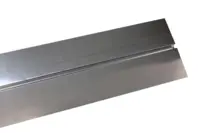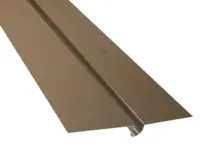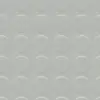- Forside
- Gode råd om gulv
- Gulvbelægninger
- Elastiske gulvbelægninger
- Akustikpaneler
- Afpassede tæpper
- Bambusgulve
- Bordplader & bordben
- Designgulve
- Fliser og klinker
- BeefEater gasgrill
- Gode råd om gulv
- Gulvtæpper
- Gulvvarme
- Græstæpper
- Korkgulve
- Køkken, bad & garderobe
- Laminatgulve
- Linoleumsgulve
- Maling, Væv & Spartel
- Måtter
- Møbler & Boliginteriør
- Nålefilt og messetæpper
- Plejeprodukter
- Restpartier & gode tilbud
- Sildebensparket & Stavparket
- Tæppefliser
- Terrassebrædder
- Tilbehør
- Trægulve
- Vareprøver
- Vinylgulv
- Værktøj
- Øvrige produkter
- Loft- og vægpaneler
- Flotte gulve
- Fyrretræsgulv
- Klikgulve
- Bestilte varer
-
-26%
-
Populær29,00 DKK
-
29,00 DKK pr m2
-
Populær21,00 DKK
-
29,00 DKK pr m2
Elastiske gulvbelægninger
Alle informationer på denne side er kopieret materiale fra Gulvfakta som er et fagteknisk opslagsmateriale, Kilde: Gulvfakta
Elastiske gulvbelægninger er en fælles benævnelse, der omfatter Linoleum, Vinyl, Kork og Gummi.
Du kan alternativt læse mere i vores indlæg om forskellige gulvbelægninger, heriblandt tekstile gulvbelægninger, laminatgulve eller trægulve.
1.3.0.1 Introduktion
1.3.0.2 CE-mærkning
1.3.0.3 Klassifikation af elastiske gulvbelægninger
1.3.0.4 Statisk og dynamisk belastning
1.3.0.5 Beskyttelse mod uklassificerede belastninger
1.3.0.6 Elektrostatisk opladning
1.3.0.7 Checkliste ved lægning af afledende/ledende gulve
1.3.0.8 Banesamlinger - trådfugning
1.3.0.9 Forventninger til elastiske gulvbelægninger
Alle informationer på denne side er kopieret materiale fra Gulvfakta som er et fagteknisk opslagsmateriale, Kilde: Gulvfakta
1.3.0.1 Introduktion
Elastiske gulvbelægninger har en række fælles træk, som gør, at visse forhold i forbindelse med lægning og anvendelse er ens for dem alle. Disse forhold omtales i det efterfølgende. I andre henseender er belægningerne forskellige, og de har således forskelligt udseende og forskellige brugsmæssige egenskaber. De særlige forhold for belægningerne omtales i separate afsnit for de enkelte belægningstyper. Elastiske gulvbelægninger er karakteristiske ved, at de er tynde og kræver fuld understøtning. Underlaget skal have samme planhed og hældning, som ønskes af den færdige gulvflade, da belægningerne ikke kan udligne ujævnheder. Elastiske gulvbelægninger kan lægges på alle tørre, sugende og plane undergulve der er fri for revner og skruk. Er underlaget sugeevne ikke tilstrækkelig skal det spartles med en egnet spartelmasse i udlagt i en tykkelse på min. 2 mm. Ved renoveringsopgaver bør den eksisterende gulvbelægning fjernes for at sikre en korrekt klæbegrund.
Gulvbelægningerne benyttes i nogle tilfælde sammen med bløde underlagsmaterialer, fx korkment, som anvendes for at opnå en trinlydforbedring og bedre gangkomfort. Elastiske gulvbelægninger fås i flere forskellige varianter. De fleste af belægningerne leveres i flere forskellige tykkelser og mange med specielle "bløde" bagsider der øger trinlydsdæmpningen og gangkomforten. I princippet de samme effekter som man kan opnå ovenfor beskrevne "bløde underlag".
Vinyl leveres homogent eller sammensat af homogene lag. En særlig variant er de såkaldte boligvinyler, vinyler med opskummet midte. Kork leveres kun i fliser, mens de øvrige både fås som banevarer og som fliser. Belægningerne kan alle rengøres ved våde (fugtige) rengøringsmetoder, idet dog nogle af belægningerne er mere følsomme for fugt end andre. Alle belægningstyperne fås i forskellige tykkelser, som vælges afhængigt af anvendelsesområde og brugsintensitet.
1.3.0.2 CE-mærkning
Gulvbelægninger af linoleum, vinyl, kork og gummi skal være CE-mærkede. Den harmoniserede standard DS/EN 14041 ligger til grund for CE-mærkningen og gælder for produktion og anvendelse i Europa.
Det er producenten eller den forhandler, der importerer gulvbelægningen, som er ansvarlig for CE-mærkningen. De egenskaber der stilles krav til fremgår af anneks ZA i DS/EN 14041:
• Reaktion ved brand
• Indhold af pentachlorophenol (PCP)
• Afgivelse af formaldehyd
• Vandtæthed
• Glathed
• Antistatiske egenskaber
• Varmeledningsevne
• Holdbarhed af reaktion ved brand
Som tillæg til standarden kan der være udarbejdet nationale krav i det omfang, det er nødvendigt for at overholde byggelovgivningen. CE-mærkning er ikke et kvalitetsmærke, men et harmoniseret standardblad, der virker som gulvbelægningens rejsepas inden for det europæiske fællesskab.

1.3.0.3 Klassifikation af elastiske gulvbelægninger
Gulvbelægninger klassificeres efter brugsområde og intensitet i henhold til DS/EN ISO 10874 "Elastiske gulvbelægninger, klassifikation".
Inddelingen sker i 3 hovedklasser: Bolig, Erhverv og Industri og dækker forskellige lokalekategorier inden for disse klasser, se fx checkliste 1 i dette afsnit. Anvendeligheden til forskellige formål fremgår af anvendelsesskemaerne for de enkelte belægningstyper, som sidder i afsnittene for de respektive gulvbelægninger.
I afsnittene om de enkelte gulvbelægningstyper er det anført, hvilke prøvningsmetoder og vurderingskriterier der ligger til grund for EN-klassificeringen af det pågældende materiale. De egenskaber, der indgår i EN-klassificeringen, er anført særskilt med en markering af de kriterier, der skal opfyldes for at opnå klassificeringen. Oplysningerne om de egenskaber, der ligger til grund for EN-klassificeringen, stammer fra producenterne, som har ansvaret for, at oplysningerne er korrekte. Desuden er der anført en række relevante supplerende egenskaber for hver gulvbelægningstype.
1.3.0.4 Statisk og dynamisk belastning
Restindtrykning ved statisk last
Elastiske gulvbelægningers modstandsevne mod blivende indtrykning er tykkelsesafhængigt og prøves i henhold til DS/EN 433.
Den statiske belastning må højst udgøre 250 N/cm² (25 kg/cm²) og den dynamiske højst 300 N/cm² (30 kg/cm²).
Egenskaben indgår i EN-klassifikation og opfyldes af alle klassificerede gulvbelægninger af linoleum, vinyl og gummi, mens kork og korkfliser med vinyl slidlag kun kan forventes at opfylde kravet, når egenskaben er oplyst af leverandøren, og medtaget som supplerende egenskab i klassifikationsskemaet.
Supplerende egenskaber
Modstandsevne mod kontorstolshjul
Prøves i henhold til DS/EN 425.
 Europæisk symbol for modstandsevne mod kontorstolshjul
Europæisk symbol for modstandsevne mod kontorstolshjul
Når der er kryds i klassifikationsskemaet under denne egenskab, opfylder gulvbelægningen kravet under forudsætning af, at stolens hjul opfylder kravet i DS/EN 12529, pkt. 4.2.2, dvs. type W, med blød slidbane af lyst materiale.
Modstandsevne mod møbelben
Prøves i henhold til DS/EN 424.
 Europæisk symbol for modstandsevne mod møbelben
Europæisk symbol for modstandsevne mod møbelben
Kravet opfyldes når der er kryds under denne egenskab i klassifikationsskemaet.
Leverandører af inventar og kontormøbler bør altid tages med på råd, så brugerne af gulvet får den rigtige vejledning i valg af kontorstole mv., som opfylder kravene i DS/EN 12529 - Ruller og hjul, møbelhjul - hjul til kontorstole, krav.
1.3.0.5 Beskyttelse mod uklassificerede belastninger
Beskyttelse mod belastninger, som ikke er omfattet af gulvbelægningens klassifikationsegenskaber. Påvirkes gulvet af andre inventargenstande, skal det beskyttes mod ridser fra bord- og stoleben af påsatte "filtdupper" af et lyst, blødt materiale, som angivet under kontorstolshjul. Andet inventar med lille kontaktflade mod gulvet, bør altid stå på et blødt underlag, fx af filt, lyst gummi eller et tilsvarende materiale. Fejlbelastning af gulvet vil medføre bortfald af belægningsleverandørens materialegaranti, herunder den særlige slidgaranti for Gulvbranchens klassificerede gulvbelægninger, hvis leverandøren har givet en sådan garanti til bygherren.
Færdsel og anden belastning på nylagte gulvbelægninger
Efter lægningen må der ikke være færdsel på gulvet før limen er hærdet. Dette tager mindst et døgn. Al anden belastning på gulvet, fx fra håndværkere, rullestilladser, transportvogne, møbler og lign., må tidligst ske, når limen har opnået fuld styrke. I afhængighed af rummets temperatur og luftfugtighed tager dette mindst 8 dage, men der kan gå op til 14 dage, før fuld limstyrke opnås. Se nærmere herom i Gulvfaktas sektion om gulvlim.
Gulvbranchens materialegaranti
For gulvbelægninger, der er klassificeret, kan leverandøren udstede en Gulvbranchens materiale garanti. Garantien udstedes skriftligt som beskrevet på Gulvbranchens hjemmeside.
1.3.0.6 Elektrostatisk opladning
Antistatiske, statisk afledende og statisk ledende gulvbelægninger
Statisk elektricitet opstår når der er en spændingsforskel mellem forskellige elementer. Almindeligvis kan det opstå, når isolerende materialer gnides mod hinanden. Personopladning opstår fx gennem friktion af beklædningsgenstande, som gnides mod møbler, men også ved kontakt med andre møbeloverflader. Ved uheldige materialekombinationer kan dette give personen spændinger på mange tusinde volt.
Gener i forbindelse med statisk elektricitet opstår bl.a., når en opladet person aflades ved at berøre en ledende genstand. Det kan være et dørhåndtag af metal, et stålskab eller lignende og kan give personen et ubehageligt stød. Afladning af elektriske spændinger under 2 kV (2.000 volt) giver sjældent mærkbare stød. Men nogle personer vil føle ubehag, hvis spændingen er mellem 2 og 3 kV. Er de elektriske spændinger over 3 kV, vil næsten alle personer føle det ubehageligt. Når en person oplades til 3 kV eller derover og igen aflades ved berøring med en ledende genstand, vil der opstå en gnist, som under uheldige omstændigheder kan antænde brændbare materialer, fx dampe fra opløsningsmidler og lignende. Inden for elektronikindustrien og andre steder, hvor der arbejdes med følsomt it-udstyr som kan ødelægges, hvis en opladet person aflader sine spændinger herigennem, stiller Arbejdsmiljøloven særlige krav, fx til gulvbelægningens ledeevne og til de sko, der må benyttes af personer, som færdes på gulvet.
Begreber:
Antistatiske gulvbelægninger (AS) (kropsspænding ≤ 2kV - DS/EN 1815)
Statisk afledende gulvbelægninger (SD) (vertikal modstand ≤ 109 Ohm - DS/EN 1081)
Statisk ledende gulvbelægninger (EC) (vertikal modstand ≤ 106 Ohm - DS/EN 1081)
Antistatiske gulvbelægninger
En antistatisk gulvbelægning må ikke opbygge eller efterlade en generende elektrostatisk opladning af en person, som færdes på gulvet. De antistatiske egenskaber prøves ved en gangtest i henhold til DS/EN 1815, hvor personopladningen ikke må overstige 2 kV ved prøvning ved 23°C ± 1°C og 25 ± 2% relativ fugtighed efter konditionering af prøveemnerne under samme klimaforhold i syv dage. Elastiske gulvbelægninger der er CE mærkede opfylder det antistatiske krav.
I server- og it-rum i administrations- og kontorområder inden for let erhverv, stilles der normalt ikke yderligere krav til begrænsning af elektrostatisk opladning.
 Europæisk symbol for antistatiske gulvbelægninger
Europæisk symbol for antistatiske gulvbelægninger
Elementer der kan påvirke de antistatiske egenskaber:
• Lav relativ luftfugtighed
• Brug af uegnet fodtøj
• Sekundære opladninger, fx fra tøj og kontorstole
• Manglende kontakt mellem fødder og gulvbelægning, fx hvis fødderne hviler på stolen.
• Statisk afledende og statisk ledende gulvbelægninger
• En lang række industrier er berørt af problemer med elektrostatisk opladning. I takt med den elektroniske udvikling har elektronikindustrien fx være tvunget til at fokusere meget på afledning af statisk elektricitet, bl.a. ved at indrette særlige ESD (Electro Static Discharge eller Statisk Elektrisk Udladning) beskyttede områder, så kostbare følgevirkninger af elektriske udladninger undgås. I henhold til DS/EN 61340-5-1 ligger den anbefalede jordafledningsmodstand R2 i ESD-beskyttede områder mellem 7,5 x 105 Ohm og 3,5 x 107 Ohm, men der kan desuden stilles krav om andre værdier i henhold til ESDbeskrivelserne.
Gulvbelægningens elektrostatiske egenskaber prøves i henhold til DS/EN 1081, som beskriver måling af alle relevante modstandstyper ved hjælp af en egnet elektrode. Standarden fastlægger dog ikke krav til gulvbelægningens modstandsevne i forskellige brugsområder.
DS/EN 1081 beskriver måling af 3 forskellige modstande:
R1 (vertical resistance) er gulvbelægningens vertikale modstand, som måles ved hjælp af en elektrode placeret på hver side af en ikke lagt gulvbelægning.
R2 (resistance to earth) er gulvbelægningens modstand til beskyttelsesjord, som måles mellem en elektrode på en lagt gulvbelægnings overflade og jordforbindelsen.
R3 (surface resistance) er gulvbelægningens overflademodstand, som måles mellem 2 elektroder, der er placeret i en veldefineret afstand på den lagte gulvbelægning.
En gulvbelægning med en vertikal modstand (R1) mellem 1 x 106 Ohm og 1 x 109 Ohm, må benævnes som statisk afledende gulvbelægning (electrostatic dissipative floor).
 Europæisk symbol for en elektrostatisk afledende gulvbelægning
Europæisk symbol for en elektrostatisk afledende gulvbelægning
En gulvbelægning med en vertikal modstand (R1), som ikke overstiger 1 x 106 Ohm, må benævnes som statisk ledende gulvbelægning (electrostatic conductive floor).
 Europæisk symbol for en elektrostatisk ledende gulvbelægning
Europæisk symbol for en elektrostatisk ledende gulvbelægning
Jordafledningsmodstanden (R2) beskriver afladningstiden mellem gulvbelægningens overside og jordforbindelsen på følgende måde:
1 x 109 Ohm betyder en afladningstid på 1 sekund
1 x 108 Ohm betyder en afladningstid på 0,1 sekund
1 x 107 Ohm betyder en afladningstid på 0,01 sekund
1 x 106 Ohm betyder en afladningstid på 0,001 sekund
Gulvets elektrostatiske egenskaber
Det er bygherren og/eller dennes rådgiver, der stiller eventuelle krav til gulves elektrostatiske egenskaber. Krav skal fremgå af udbuds- og aftalegrundlaget, men for at sikre det rigtige valg i forhold til det aktuelle brugssted, er det vigtigt, at brugere og udstyrsleverandører tages med på råd.
Krav kan have baggrund i sikkerhedsforskrifter, fx Arbejdsmiljøloven eller Stærkstrømsbekendtgørelsen. Mange industrielle virksomheder, bl.a. inden for medicinalindustrien, stiller egne krav til gulves elektrostatiske egenskaber, som skal opfyldes. Krav til gulves elektrostatiske egenskaber skal altid fremgå af udbuds- og aftalegrundlaget.
1.3.0.7 Checkliste ved lægning af afledende/ledende gulve
Checkliste ved lægning af afledende/ledende gulve
• Undergulvet skal være tørt, for beton må porrefugten højst være 85% RF
• Undergulvet skal have samme planhed, som forventes af det færdige gulv, normalt ± 2 mm på 2 m
• Under og efter limning skal temperaturen i luften og undergulvet være 17 - 25°C og luftfugtigheden 35 - 75% RF
• Gulvbelægningen skal akklimatiseres mindst 24 timer i rummet før lægning
• Det skal fremgå af udbudsmaterialet, hvor kobberbånd skal føres op ad væggen
• Jording skal foretages af autoriseret el-installatør
• Afledningsevnen bør af sikkerhedsmæssige grunde kontrolleres af en uvildig person - og det skal fremgå af udbudsmaterialet, hvis gulventreprenøren skal foranledige kontrollen udført.
Vedligehold
Belægningsleverandørens anvisninger om rengøring og vedligehold af afledende og ledende elastiske gulvbelægninger skal udleveres til brugeren og altid følges, så optimal afledningseffekt opnås. De rengørings- og vedligeholdsmidler der anvendes, skal altid være tilpasset det aktuelle gulv.
Elementer der kan virke forstyrrende på afledningsevnen
• Afledningssystemer er ikke tilstrækkeligt ledende
• Falske jordforbindelser, dvs. manglende beskyttelse omkring rør etc.
• Uegnet fodtøj
• Potential-tilslutninger er ikke korrekt tilsluttet eller mangler helt
• Uegnede (isolerende) plejemidler på gulvet
• Brug af forkerte målemetoder.
Andre elementer (isolation)
• Limen er for ledende
• Gulvbelægningen er for ledende
• For højt fugtindhold i undergulvet
• For høj relativ luftfugtighed i rummet.
Det fagtekniske udvalg for elastiske gulvbelægninger har udarbejdet en folder om antistatiske, statisk afledende og statisk ledende elastiske gulvbelægninger, som kan downloades fra www.gulvbranchen.dk.
1.3.0.8 Banesamlinger - trådfugning
Banesamlinger i elastiske gulvbelægninger er sårbare. Banesamlingerne kan beskyttes ved at forsegle dem med en fuge. Fugen skal altid vælges, så den passer til den aktuelle belægning. For PVC-belægninger benyttes en svejsetråd, der ved opvarmning bliver flydende og smelter (svejses) sammen med belægningen. Når svejsetråd og belægning passer sammen, kan fugerne udføres vandtætte, hvilket fx benyttes i vådrum og laboratorier. For linoleum benyttes trådfugning, hvorved fugetråden varmes op og hæfter til belægningen. Fugen bliver dog ikke hverken så stærk eller tæt som fuger i PVC-belægninger. For gummi kan benyttes trådfugning, der dog ikke giver så stærk og tæt en fuge som fuger i PVC. For gummi kan der endvidere benyttes fugemasse. Vær opmærksom på at fugning og svejsning af elastiske gulvbelægninger er omfattet af MAL-kode bekendtgørelsen og at montøren skal bære åndedrætsværn under arbejdet. Arbejdsmiljøreglerne gælder også for andre personer der opholder sig i arbejdsområdet.
1.3.0.9 Forventninger til elastiske gulvbelægninger
Vores oplevelse af et produkt er i meget høj grad styret af de forventniniger vi har til det. Gulvbranchen har udarbejdet en folder, der adresserer de forventninger du som forbruger med rette kan have til gulve med elastiske gulvbelægninger. Du kan downloade folderen ved at klikke her. Herudover findes der på www.gulvbranchen.dk en række tekniske publikationer om gulve og gulvbelægninger. Ved at klikke her, vil du blive dirigeret videre til de tekniske publikationer.


















